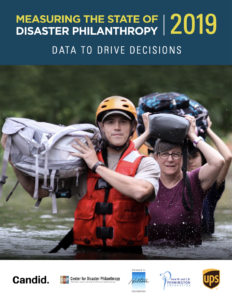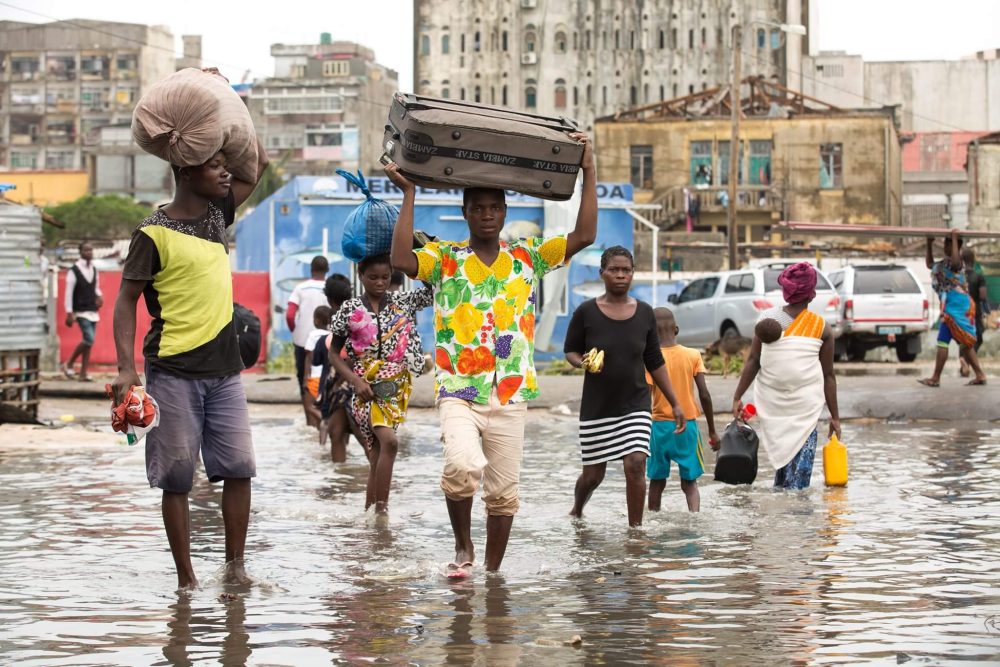Dramatic Increase in Giving in Response to Costliest Year of US Natural Disasters (2017)
I am delighted to announce our sixth annual research report, Measuring the State of Disaster Philanthropy 2019: Data to Drive Decisions, developed in partnership with Candid. In this report, it is compelling to see the increase in giving in response to what we know was a devastating year of disasters; a year that included the […]

I am delighted to announce our sixth annual research report, Measuring the State of Disaster Philanthropy 2019: Data to Drive Decisions, developed in partnership with Candid. In this report, it is compelling to see the increase in giving in response to what we know was a devastating year of disasters; a year that included the sweeping wildfires in California, Hurricanes Harvey, Irma and Maria, two major earthquakes in Mexico, famines in northern Nigeria, Somalia and South Sudan as well as the continued civil unrest in Syria and Yemen.

Drawn from 12 data sources, the new report documents $45 billion in private, public, corporate and individual disaster-related giving to address major disasters and humanitarian crises that affected millions globally in 2017.
Key findings from the report:
- Almost $504 million in funding by foundations and public charities.
- Disaster-related funding doubled from 2016, based on a year-over-year analysis of grantmaking by 1,000 of the largest U.S. foundations.
- Natural disasters accounted for 65 percent of disaster funding.
- FEMA distributed $15.6 billion for U.S. disasters in 2017, an $11.9 billion increase from 2016.
- Among disaster assistance strategies, more than 64 percent of dollars were for response and relief.
I will say, it is truly encouraging to see the level of response to the disasters that marked 2017. At CDP we saw an outpouring of generosity that year to our recovery funds for the North American disasters. But what we know is, two years later communities impacted are still working hard to recover, so it is distressing that funding for recovery, according to the report, has seen no change over the previous year (17 percent) and that a mere two percent each went to resilience and preparedness efforts.
To learn more about this and all the data, I invite you to join us for a webinar in collaboration with Candid on Thursday, Nov. 14 at 2 p.m. ET, Measuring the State of Disaster Philanthropy 2019. We will be taking an in-depth look at the findings and, as part of the panel, we will hear from Attack Poverty, a CDP Hurricane Harvey Recovery Fund grantee and Philanthropy Puerto Rico. You can register here.
A quick reminder too that the report has interactive data dashboards and mapping platforms, available here.
I will end with three notes of sincere appreciation. Thanks to you for your interest in this data. Thank you to our funders – this report was made possible by a generous gift from the Irene W. and C.B. Pennington Foundation, with additional funding from the Conrad N. Hilton Foundation and the UPS Foundation. Thanks too, to our team here at CDP and at Candid. We all hope this report will give you the tools to help make more informed and strategic disaster-related giving decisions.
More like this

New data to inform strategic disaster philanthropy

